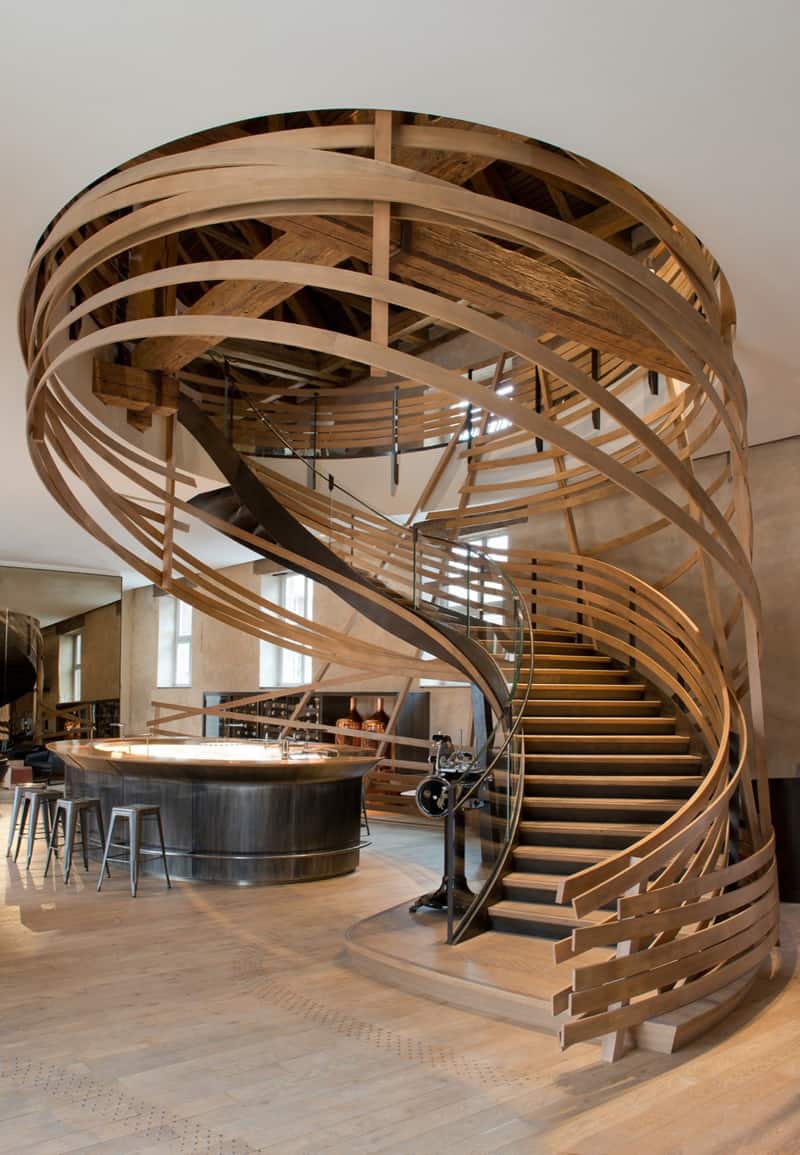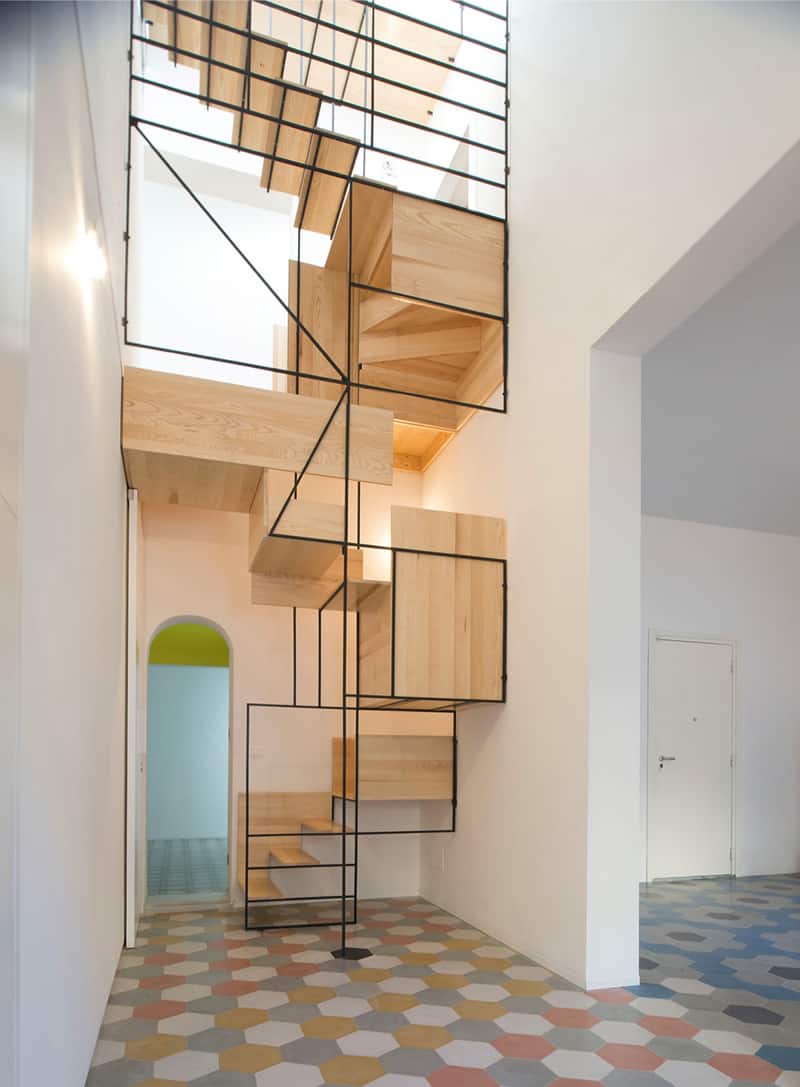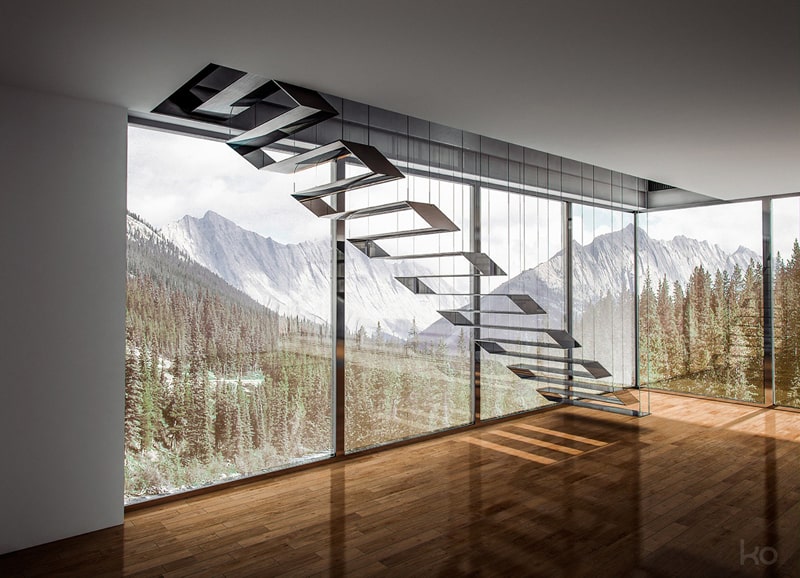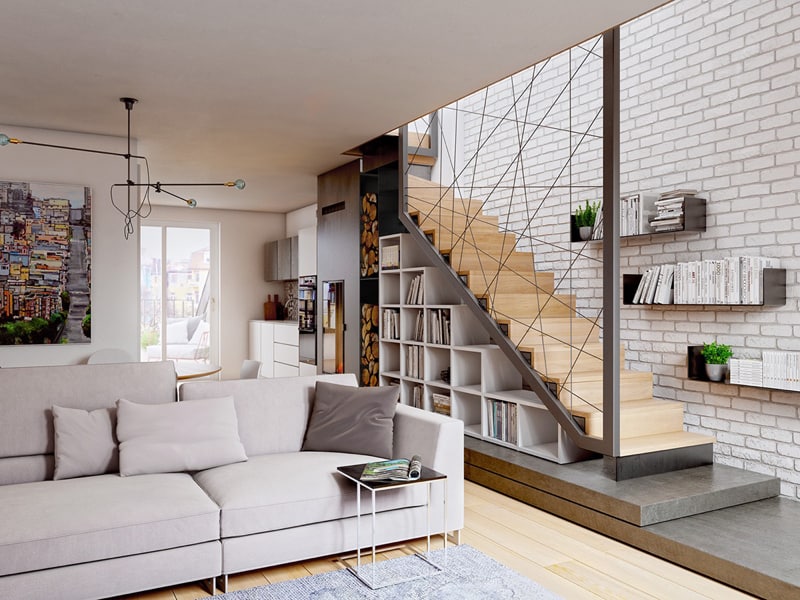There are many different staircase designs that can be used in household constructions. The one you select for your house construction or renovation will depend on the space you have to work with, the purpose of the stairs, and your budget. You should also consider the age of the people navigating the stairs, curved and spiral staircases are beautiful, but might not be as practical when people with reduced mobility live in the house.
The most common staircase is the straight one. It goes from one floor to the next in one section of equally spaced steps, in a straight line. Each step has the same depth and the same height. This staircase is excellent for heavy traffic, moving or carrying things from the first to the second floor and having more than one person in the stairs at the same time. It takes a bit of linear space in the floor plan, but the unused space underneath can be transformed into many useful designs such as a desk for a cozy home office or bookshelves for your collections.
If you must restrain the linear space that your stairs occupy, an L-shape or U-shape might be a better design. L-shape stairs are used in a corner to change the direction of the stairs by 90 degrees. U-shape stairs change the direction by 180 degrees. Both styles are still wide enough to allow for two people to use at the same time, but transporting larger objects up and down becomes somewhat trickier. The advantage of this design is that it is not as long as traditional staircases and is useful in multi-level houses.
The curved staircase is a difficult design that looks fabulous in mansions or on television but might not be practical in regular residential homes. Each step is different in width, making climbing and going down arduous for people with spatial awareness difficulties. They also produce a lot of unused space that is not as easily recuperated as in the straight staircase.
Finally, the most hypnotic and interesting staircase type is the spiral one. A style that you see in downtown lofts or near the beach, the spiral staircase is not at all practical. It is generally narrow and occupies minimal space, but it is difficult to navigate and might facilitate falls. It is impossible to carry large objects in such a staircase, which is why in many regions it cannot serves as the only mean of access to the second floor. Each step is tapered and of the same dimension, but only one person can go up or down at the time.
Whatever type of staircase you choose for your house, make sure it meets your needs and those of the people who live with you. A staircase is a focal point in your house and must look fantastic, but you cannot jeopardize safety for vanity. Once you have selected the model you like most, think of the handrail and accessories that will make your stairs stunning.













